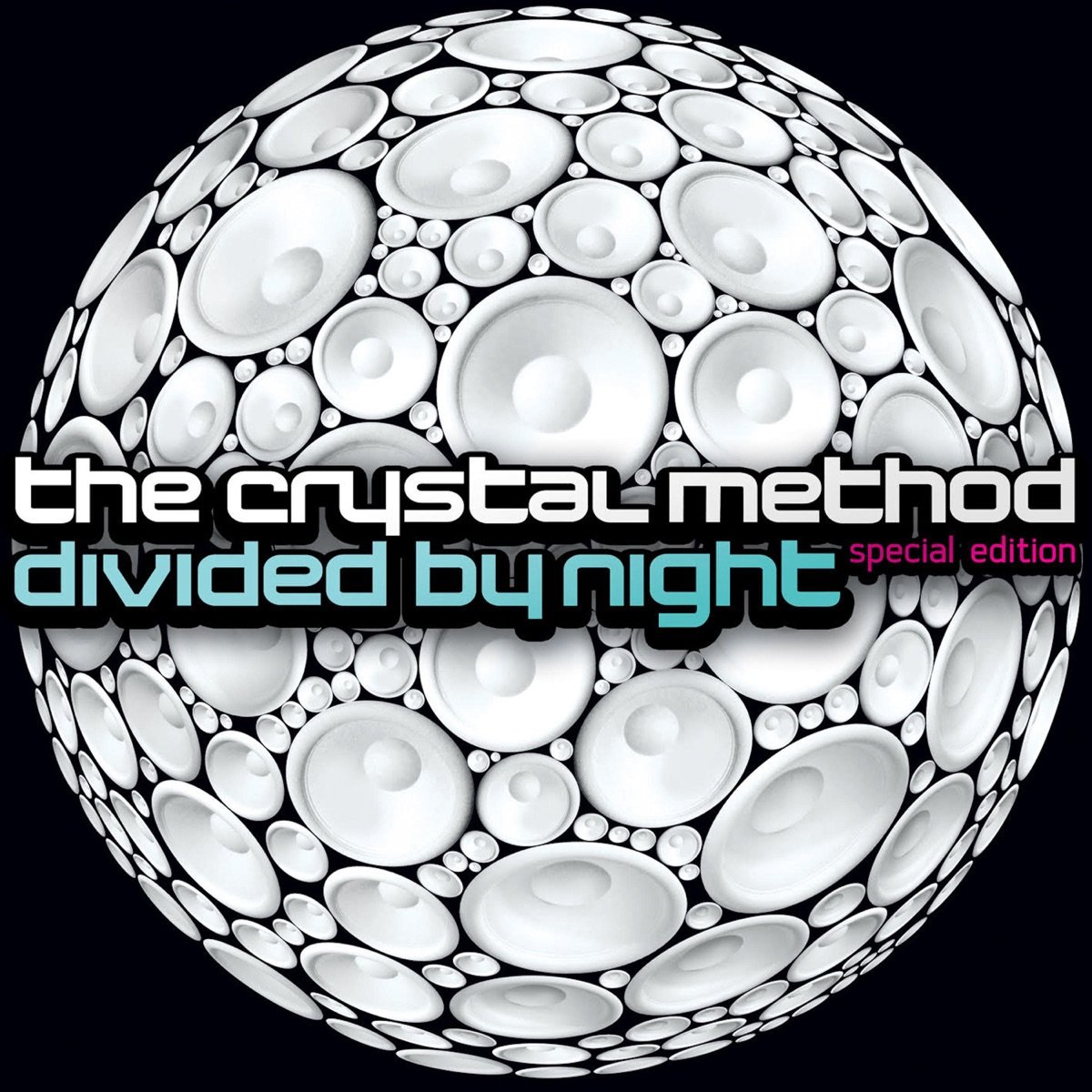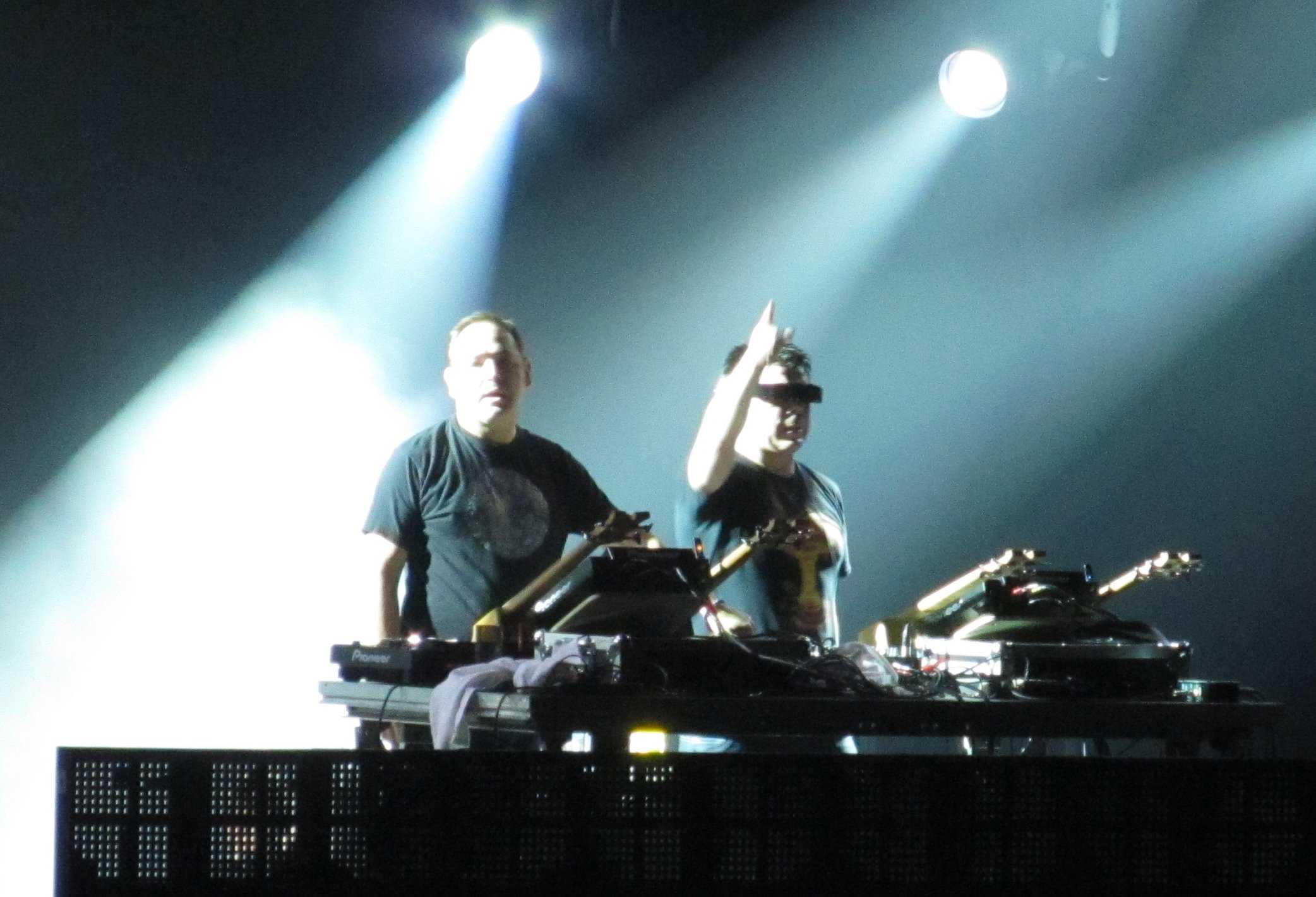The Weird Reversed Career of The Crystal Method
The Crystal Method never made a song better than “Keep Hope Alive,” their very first single. It was (and remains) the most Crystal Method song in their entire catalogue. It is their signature sound, the one that established them as major players in 90s techno. And they’ve never rivaled its heights again.
That’s not to say the rest of their albums weren’t any good. Tweekend was great dance floor fodder, and their self-titled album was a welcome return to form, but neither had the impact of Vegas. How could they? That CD was a perfectly crystalized slice of 1997, a powerful blend of samples, synths and breakbeats that scored car commercials and action movies when it wasn’t breaking stereos and deafening ravers all over the country. Nearly every track was commercially licensed. As soon as any of those songs began to play, you knew what you were watching was going to be cool. Vegas still sounds like the future almost 30 years later, something that can’t be said of the Method’s subsequent work.
Again, I’m not saying the other albums were bad. Except for Divided by Night—that one was a terrible disappointment we will eviscerate later. Most of the rest is perfectly serviceable breakbeat shredder. What’s unique about the Crystal Method’s discography is the release order, starting with a genre-defining masterpiece and slowly progressing into a fumbling freeform experimentalism. That’s not a typical trajectory for a musical career. Or rather, it is, just in reverse.
Most musicians, but especially those that make electronica, begin their journey by just messing around and seeing what interesting sounds they can make. These efforts usually result in music that is fun if unrefined. Strangely, this accurately describes the Crystal Method’s last two albums, The Trip Home and The Trip Out. Rather than the most recent release of a weathered veteran, these albums sound like the first fledgling attempts of a new artist who is still figuring it out, but shows tremendous potential. The songs are quite long and rambling, full of weird spacey interludes and heavy bass punctuated with meandering waves of synth. Although they’re an interesting listen, these two albums contain surprisingly few dance floor friendly tracks from a group known to dominate them. While there are a few bangers in the bunch, there is nothing as iconic as “Keep Hope Alive,” or even “Wild, Sweet and Cool,” for that matter. These are the only two Crystal Method albums where I cannot name a single song from memory. They’re a good time, but ultimately forgettable. It’s just odd that they were produced by an artist with 30 years experience rocking dance floors, and not some rookie cutting his first mixtape.
The Crystal Method, their self-titled 2014 album, feels like a sophomore effort from an ambitious new musician determined to improve. It doubles down on the heavy synth and big beats heard on The Trip Home and The Trip Out, but tightens up the structure even as it adds complexity. It firmly establishes the “five minutes into the future” sound that would become the Method’s enduring signature. Or it would have, if The Crystal Method was their second album rather than their fifth. As it is, that album served as more of a capstone on an era of electronic music rather than a ground-breaking foray into new and original sounds.
Divided By Night is the ludicrously terrible concept album that somebody should have tried harder to discourage. It’s a hazard that befalls many musicians fortunate enough to make more than two albums, and the Crystal Method was not immune. The Chemical Brothers have the disjointed Born In The Echoes, Moby has the disinterested Hotel, and even the Beastie Boys have that one ill-advised punk record. Divided By Night is trying so hard to sound “different” that it ultimately fails to do anything interesting. It is littered with boring beats and lackluster vocals, including the worst performance I have ever heard from Matisyahu. The “best” tracks this album has to offer sound like elevator music covers of better Crystal Method songs. When you’re ready for the party to be over and you want everyone to get the fuck out of your house, just put on Divided By Night. Your place will be empty by Track 4.
Legion of Boom sounds like the over-correction made in the wake of Divided By Night’s utterly flat failure. On this reversed timeline, Legion of Boom takes the role of a welcome return to form after a disappointing deviation. It doubles down on the most recognizable elements of its predecessors—more synths, thicker basslines, heavier guitar riffs—producing a much more industrial sound. Lots of threatening beats and aggressive vocals. It even has one chill downtempo song, just like all of their best albums. Many of its best tracks feel like a machine struggling to break its programming, constantly pushing the boundaries between breakbeats and techno, but ultimately unsure what to do once it got there. In the end, Legion of Boom was more shrill than it was edgy, a loud statement that the Crystal Method continued to exist, devoid of any real substance. It’s not a bad album, but it never got the radio and dance floor plays that its predecessors did in either version of the timeline. Legion of Boom has no unforgettable classics like “Keep Hope Alive,” but it also doesn’t have any embarrassing flubs like “Drown in the Now.” A fun and energetic listen, it just doesn’t have enough personality to be anybody’s favorite.
Continuing along this timeline, the Crystal Method’s second album, Tweekend, becomes their sixth. And that simple change elevates it into something truly special rather than the first step of a long decline. They appear to have taken all the lessons learned from both their successes and failures, and synthesized them into one fantastic breakbeat record. Tweekend has all of the Method’s strengths, and shockingly few weaknesses. “Murder” and “Name of the Game” are the only ill-advised mergers of grunge and breakbeat on this album, an idea that had plagued all of its “predecessors.” Thrashing guitars are still prevalent throughout, but with the previous two exceptions, they don’t overpower the rest of the song. This record is fast, frenetic, and pulsing with energy. You will find it extremely difficult to sit still when it’s on. Tweekend feels like the Crystal Method refining their own unique electronic sound instead of a rock album made by a robot. In that way, it is strange that Tweekend was actually the follow-up rather than the precursor to the Method’s greatest work, Vegas.
Vegas is a thing of sublime sonic beauty. A record nobody else could have made in any other time, not even the Crystal Method. A sound sleek as glass and sharper than a katana. It is liquid hype in an aerosol can, ready to burst into flames at the slightest spark. Put on any track, and within thirty seconds you’ll be ready to win a drag race or fight a room full of ninjas. It starts off slow, with the spaced-out acid tech vibe of “Trip Like I Do,” but catches you by surprise when it finally kicks off. After that, Vegas never taps the brakes, pouring gallon after gallon of gas into a vibrant pumping engine of music. The massive reverberating big beat of “Busy Child” builds into the minimalist synthwave rhythms of “Cherry Twist,” which gradually gives way to the fat delicious heavy bass groove of “High Roller.” Trixie Reiss gives the best vocal performances the Method ever had on “Comin Back” and “Jaded.” And of course, Vegas included the dance floor shattering single “Keep Hope Alive.”
Vegas was the album of 1997. It took off like a space shuttle the first time a DJ gave it a spin. This record was inescapable. You heard it everywhere—on the radio, in the club, bumping from car windows and juicing up action movie trailers. Any footage you had instantly became 95% cooler when it was set to the pulsating vibrations of the Crystal Method. Hell, when my father went to buy his midlife crisis sports car, the salesman showed off the stereo by cranking up the subwoofer on “Vapor Trail.” And it fucking worked. My father drove around in an uncomfortably small gas-guzzling Ferrari that he hated for two years because it was just too rad to resist when the Method was pumping through its speakers. It would be difficult to think of any album from that year that was more influential. The best tracks on Vegas didn’t just inspire future musicians to copy them, they literally convinced us to buy things we didn’t need just because they look so cool with the hook for “Keep Hope Alive” playing in the background. Most musicians of any genre would count themselves fortunate to make an album half as iconic after decades of hard work, but the Crystal Method absolutely crushed it on their first attempt. They continued to make great music after, but nothing as world-flipping as their first single. It’s not really all that surprising that they were never able to surpass the perfect electric craftsmanship of Vegas—nobody could. “Keep Hope Alive” was the pinnacle of a career that just started; a track so amazing that everything that followed it couldn’t help but look derivative.
What a strange, reversed trajectory for a musician. To begin with your magnum opus, and then spend the rest of your career getting close, but never surpassing it. Vegas still sounds like the final refined product of a long percolating process, but it’s more like the Big Bang that created the Crystal Method in a burst of sound and fury, and its been ever-so-slowly collapsing in on itself ever since.
Wow. That last bit sounds a lot harsher than I meant it. I really do think the Crystal Method is a great producer with more good tracks than bad ones. It was just the order of their releases that struck me as so odd, so perfectly reversed from what you might expect. And it’s still a bit of a mystery—how did they manage to do an entire musical career backwards? Maybe we’ll never know.








